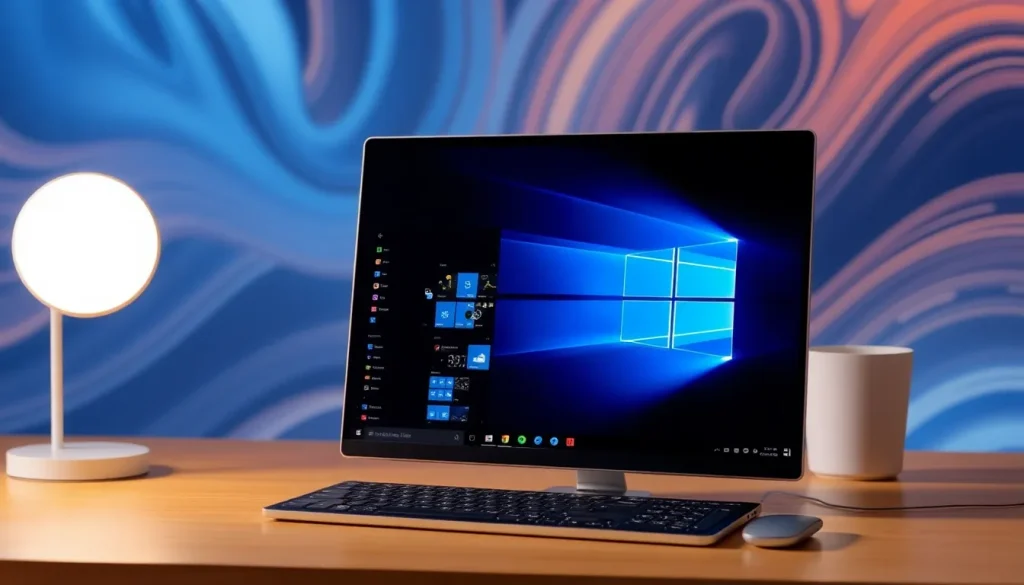Windows 11 and AI shape the future of the PC market in the U.S.

The U.S. PC market is at a crossroads, grappling with the dual forces of Windows 11's rollout and the increasing integration of artificial intelligence (AI) in everyday computing. As consumers and businesses navigate this transition, the implications for the market are profound, influencing purchasing behavior and future growth trajectories. Understanding these dynamics is crucial for anyone interested in the future of technology and computing.
In recent months, industry analysts have noted significant shifts in the landscape. With a year-on-year decline of -1.4% in PC shipments, totaling 18.6 million units, the market is reflecting not just sluggish consumer demand but also the onset of a broader transition towards more advanced systems equipped with AI capabilities and Windows 11. As we peer into the future, concerns mount regarding whether these trends could extend beyond the U.S. into global markets, particularly as we approach 2026 and 2027.
- Current State of the U.S. PC Market: A Decline Driven by Windows 11 and AI
- Segment Analysis: Consumer vs. Corporate Demand
- Future Projections: Challenges Ahead for Hardware and Software
- The Role of AI and Windows 11 in Driving Market Growth
- Market Dynamics: Adapting to Consumer Needs
- Conclusion: The Road Ahead for the PC Market
Current State of the U.S. PC Market: A Decline Driven by Windows 11 and AI
According to a recent report from Canalys, the data outlines a concerning picture for the U.S. PC market. Notably, major players are experiencing varying degrees of success:
- HP: Maintained its lead with 4.77 million units, holding 25.6% of the market, but saw a decline of -4.8%.
- Dell: Similarly, faced a -3.5% drop, resulting in 23.5% market share.
- Lenovo: The only brand to gain traction, growing by 5.1% and capturing 18.4% of the market.
- Apple: Enjoyed a remarkable increase of 15.5%, reaching 2.68 million units and 14.4% market share.
- Acer: Faced significant challenges with a -10.5% decline, dropping to -6.1%.
Despite some brands managing to stay afloat or even thrive, the overall trend reveals a market grappling with substantial pressures.
Segment Analysis: Consumer vs. Corporate Demand
Breaking down the statistics by segments presents a more nuanced understanding of the current market dynamics:
- Consumer Market: Exhibited a significant slowdown, with predictions of a -3.9% decline in 2025.
- Corporate Sector: Remained resilient, reporting a 4% growth in the last quarter, with projected total shipments of 31.9 million units for the year, marking an 8.3% increase.
- Government Purchases: Also showed promise with a projected 9.9% growth in 2025.
- Education Sector: Largely stagnant, with only a 0.3% growth observed.
The stark contrast between consumer and corporate demand presents a critical insight: while businesses are investing in hardware, individual consumers appear hesitant, raising questions about long-term market viability.
Future Projections: Challenges Ahead for Hardware and Software
Looking ahead, experts predict that the next few years could be rocky for the PC market. Greg Davis from Canalys noted that the adoption of AI in commercial settings has been promising, with usage doubling over the past two years. A forecast predicts a further 50% increase in 2025. This surge is largely driven by the need for efficiency in operations, making AI tools essential for many businesses.
However, challenges loom on the horizon:
- Summer Slowdown: As companies pilot new technologies, some fear stagnation in innovation.
- Future Recovery: Canalys estimates a modest recovery for 2025 and 2026, expecting 3% growth each year.
- 2027 Outlook: However, there’s a risk of returning to negative growth, with a projected -3.7% decline.
This mixed outlook underscores the importance of adaptability in a rapidly evolving technological environment.
The Role of AI and Windows 11 in Driving Market Growth
The transition to Windows 11, coupled with the integration of AI, is paramount in influencing the future of the PC market. The challenge lies in convincing consumers and businesses that upgrading is not just about replacing old devices but rather an investment in enhanced productivity and efficiency. Key considerations include:
- Value Proposition: Manufacturers must illustrate the tangible benefits of new devices equipped with AI capabilities.
- Price Sensitivity: With many users hesitant to transition from Windows 10 to Windows 11, price adjustments are critical for stimulating demand.
- Quality and Performance: New hardware must demonstrate significant performance enhancements to sway consumer sentiment.
As the industry evolves, how effectively manufacturers communicate these benefits will determine their competitive edge in a challenging market.
For a deeper understanding of the current landscape and the implications of these trends, check out this video that discusses the challenges facing Windows 11:
Market Dynamics: Adapting to Consumer Needs
As the market continues to evolve, understanding consumer behavior will be vital. Companies must prioritize the following strategies:
- Customer Education: Help users understand the benefits of AI and Windows 11 to overcome resistance to change.
- Flexible Pricing: Offer competitive pricing to attract hesitant consumers.
- Enhanced Support: Provide robust support for users transitioning to new systems.
These strategies will be essential as companies navigate the complexities of a market in transition.
Conclusion: The Road Ahead for the PC Market
In summary, the U.S. PC market is experiencing a pivotal moment influenced by the transition to Windows 11 and advancements in AI technology. As companies strive to adapt to changing consumer needs, the focus will need to shift from merely selling hardware to providing value-added solutions that enhance productivity and efficiency. The success of these efforts will ultimately shape the future of the PC market in the coming years.




Leave a Reply